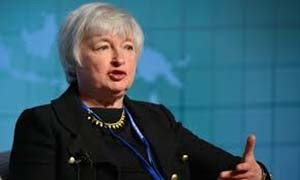Investors are awaiting this week’s FOMC Meeting, yet the overwhelming consensus is that the Fed won’t raise interest rates.
The U.S. Federal Reserve’s two-day meeting kicks off Tuesday. The Fed meeting will conclude with a statement at 2 p.m. on Wednesday. There will not be a press conference after the meeting.

After the Fed’s meeting last month, central bankers left interest rates unchanged near zero. Fed Chairwoman Janet Yellen said that mounting uncertainty over the global economy had overshadowed the progress made here in the United States.
While the Fed is expected to once again pause on implementing an interest rate hike, this week’s FOMC Meeting meeting will still be closely watched. Investors and economists will be looking for any hint of change in the Fed’s outlook, as well as an indication if rates will rise before the end of the year.
The Fed’s final meeting of 2015 is in December.
Will the December FOMC Meeting Lead to a Rate Hike?
Many economists predict we’ll see the first interest rate hike since 2006 following the December FOMC Meeting.
Some believe the FOMC Meeting will hike rates then because the Fed officials want to begin the journey to “normalization” as soon as possible.
But a March 2016 interest rate hike looks more likely.
The global economy remains the biggest concern for Yellen. Europe, Japan, and China are still in easing monetary mode, and that’s problematic for the Federal Reserve.
In the past week, China posted its slowest gross domestic product (GDP) growth since the Great Recession. Japan reported a sharp decline in export growth. And European analysts trimmed their projections for Eurozone inflation.
Last Thursday, European Central Bank President Mario Draghi signaled the bank is prepared to engage in another stimulus package to revive the Eurozone’s anemic economy.
Friday, the People’s Bank of China cut its benchmark lending and deposit rates by 0.25%. It was the Asian nation’s sixth interest rate cut in less than a year.













Leave A Comment